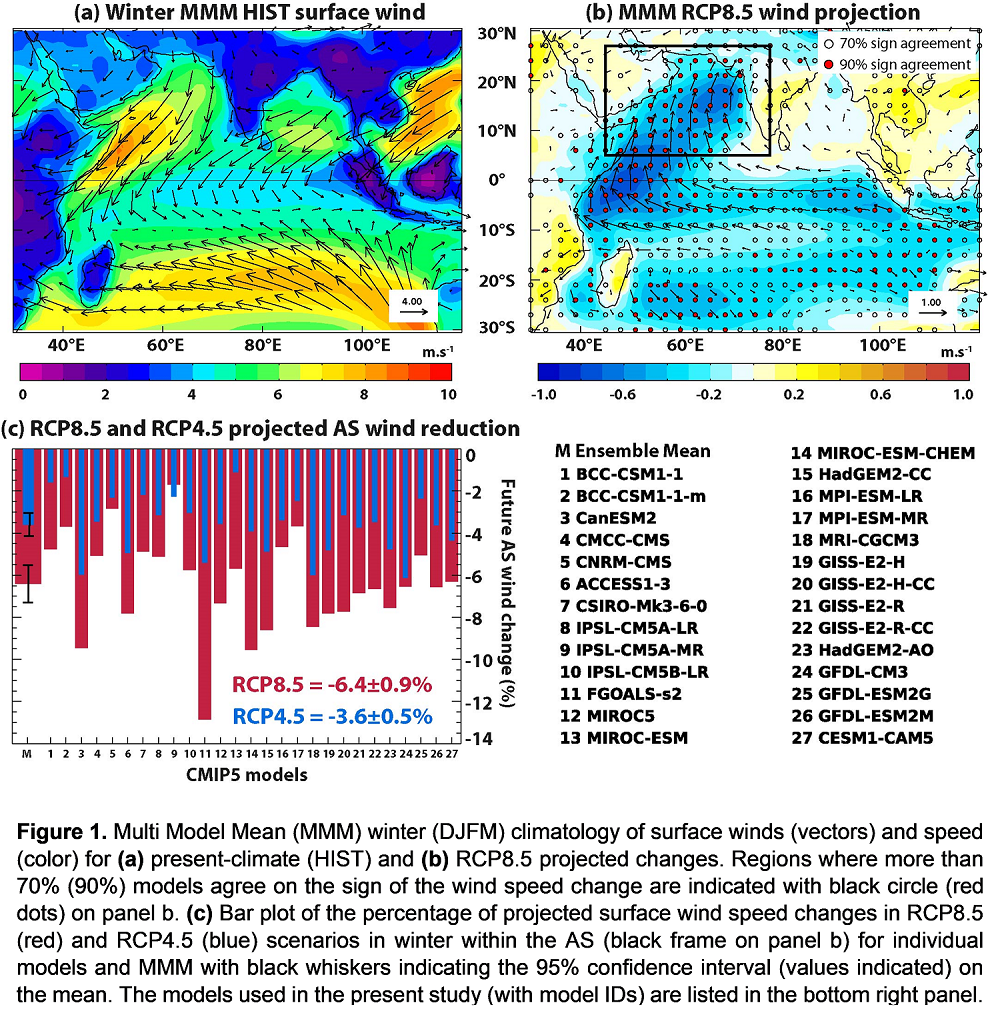Projected response of the Indian Winter Monsoon Winds over the Arabian Sea to Climate Change

The study of Parvathi and collaborators published in October 2017 in Geophysical Research Letters is the first to assess the influence of global warming on the Indian Winter Monsoon (IWM) by analyzing the present-day and the future simulations from Coupled Model Intercomparison Project phase-5 (CMIP5). Their results indicate a robust reduction of the IWM wind intensity over the AS by the end of the 21st century in all the 27 analysed CMIP5 models (a reduction of 6.5% for Representative Concentration Pathways (RCP) 8.5 and 3.5% for RCP4.5, on an average, Fig. 1), which is not yet detectable in observations. This projected reduction weakens, but remains robust when corrected for the overestimated current-day Arabian Sea (AS) winds in CMIP5 models. The IWM wind reduction can be related to the stronger warming over the dry Arabian Peninsula compared to the southern Indian Ocean, leading to decrease in the interhemispheric pressure gradient.
Despite a decrease in the winter monsoon winds, the climate change also induces increased rainfall (+10±2%) in the winter monsoon rainy zones in the equatorial Indian Ocean. This projected rainfall increase however occurs mostly over the ocean, and hence is of lesser relevance from a socio-economic viewpoint than its summer counterpart, except for the east African countries and islands located in the equatorial region. The projected changes in regional rainfall are however highly sensitive to CMIP5 model biases, and hence need further assessment.
The IWM wind reduction may however have more serious consequences for the AS biological productivity. The northern AS becomes highly productive during winter, owing to the strong and dry northeasterly winds blowing from the continent, which favours convective overturning and hence entrainment of nutrients into the euphotic layer. This study also reveals that the projected weakening of the winter AS winds acts to reduce the oceanic stirring and heat losses to the atmosphere over the northern part of the basin, which in turn reduces the winter mixed layer deepening. This reduced winter overturning may potentially lead to a decrease in productivity there and could also influence the upper boundary of the AS oxygen minimum zone. The reduced winter ventilation and decreased primary productivity have opposite effects on the AS oxygen minimum zone, and their combined effect remains unknown. These issues pose challenges for the future investigations.
Parvathi, V., Suresh, I., Lengaigne, M., Izumo, T., & Vialard, J. (2017). Robust projected weakening of winter monsoon winds over the Arabian Sea under climate change. Geophysical Research Letters, 44. https://doi.org/10.1002/2017GL075098














Add new comment